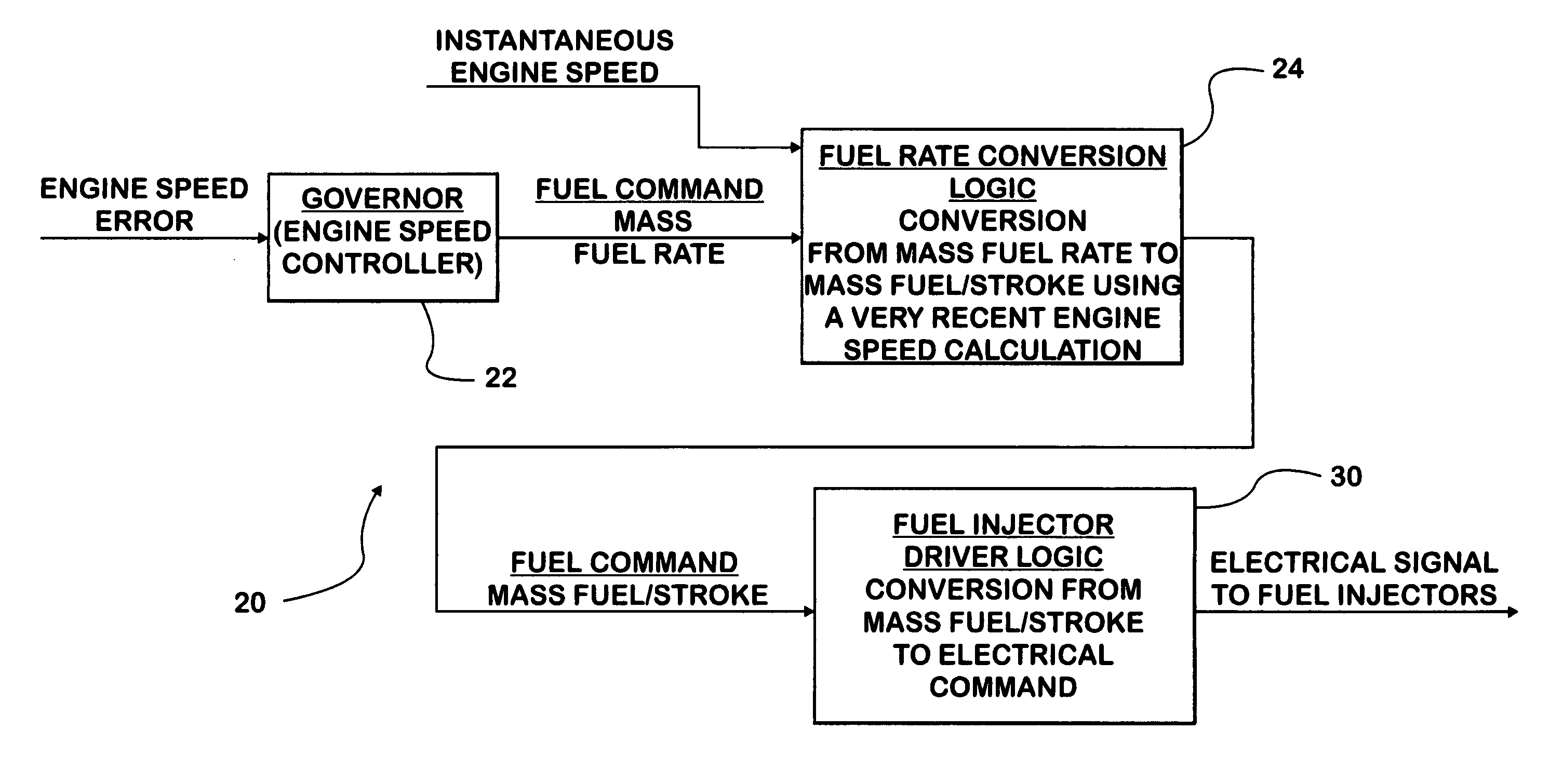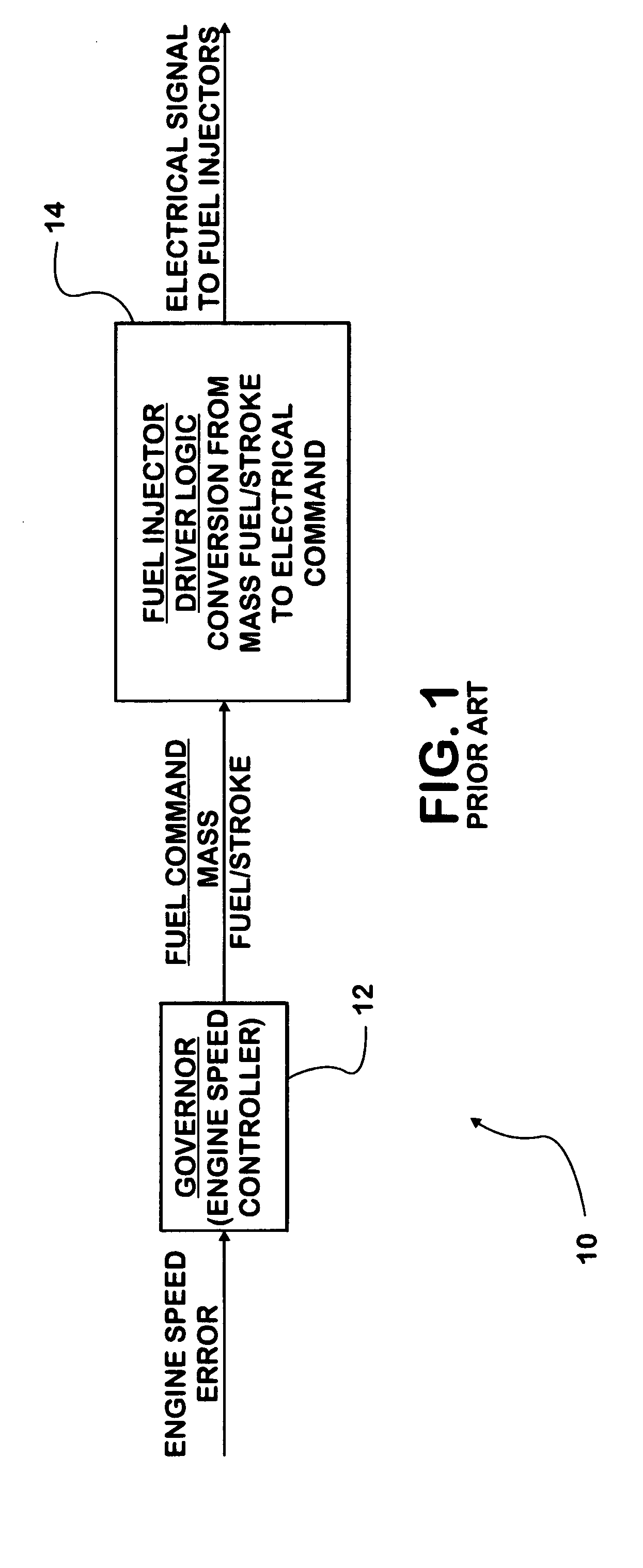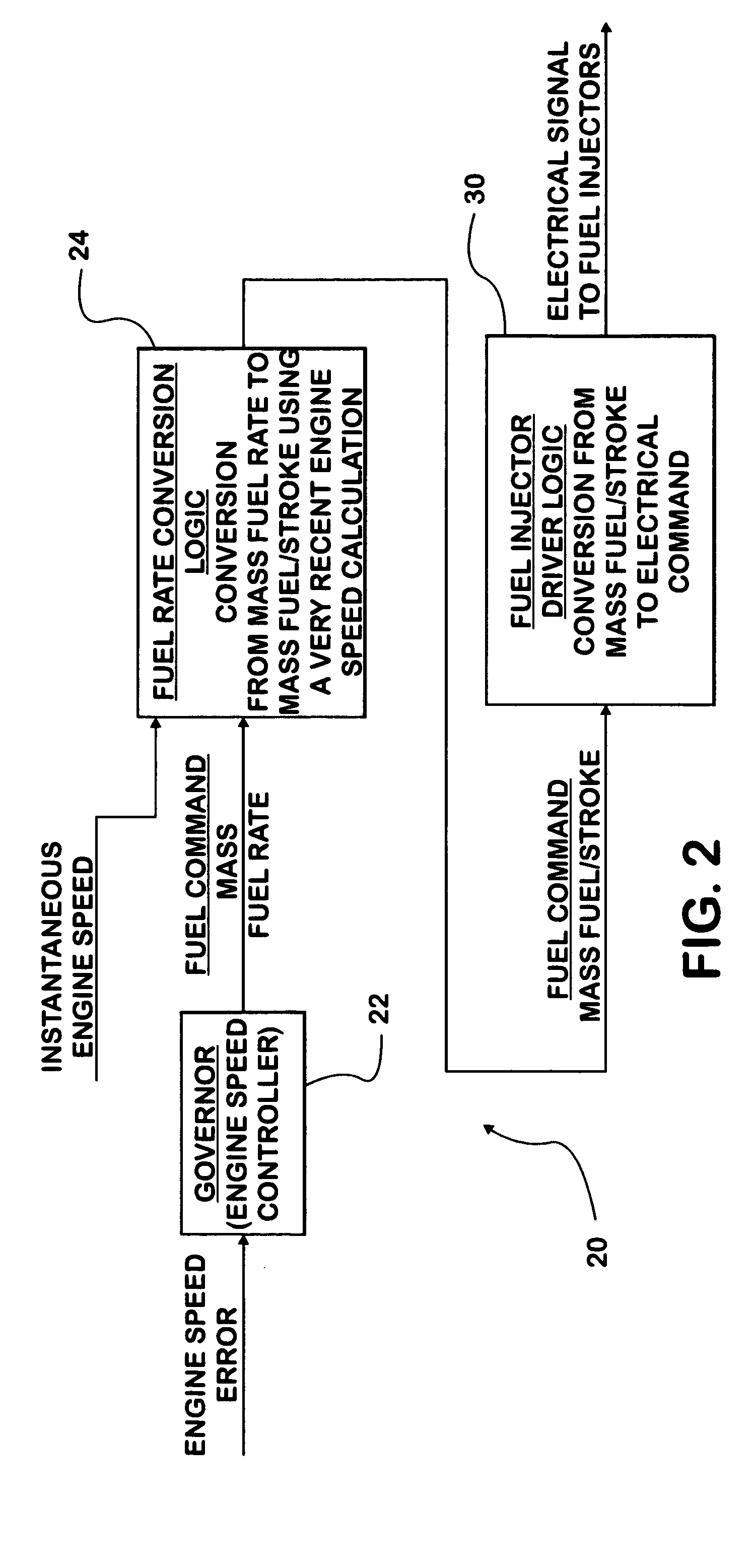Engine speed stabilization using fuel rate control
a fuel rate control and engine technology, applied in the direction of electric control, speed sensing governors, instruments, etc., can solve the problems of idle speed stability, speed instability manifesting itself, and none has been able to achieve complete success in overcoming, so as to avoid idle speed instability
- Summary
- Abstract
- Description
- Claims
- Application Information
AI Technical Summary
Benefits of technology
Problems solved by technology
Method used
Image
Examples
Embodiment Construction
[0029]FIG. 1 shows a known governing strategy 10 for a diesel engine. The strategy can be implemented in a processor-based engine control system using an appropriate algorithm to govern engine idle speed.
[0030] Strategy 10 comprises processing data values for actual engine speed and desired engine idle speed to yield a data value for engine speed error that forms a data input to a governor 12. Governor 12 is implemented, in an ECM for example, as an appropriate governor algorithm programmed into the processing system of the ECM. Governor 12 processes the data value for engine speed error according to the algorithm to yield a data value for engine fueling in terms of quantity-per-stroke, such as fuel mass per stroke in any appropriate unit of measurement, such as milligrams per stroke.
[0031] That data value is communicated to fuel injector driver logic 14 that is present, in an ICM for example, to control fuel injectors of the engine fueling system. Driver logic 14 converts the qua...
PUM
 Login to View More
Login to View More Abstract
Description
Claims
Application Information
 Login to View More
Login to View More - R&D
- Intellectual Property
- Life Sciences
- Materials
- Tech Scout
- Unparalleled Data Quality
- Higher Quality Content
- 60% Fewer Hallucinations
Browse by: Latest US Patents, China's latest patents, Technical Efficacy Thesaurus, Application Domain, Technology Topic, Popular Technical Reports.
© 2025 PatSnap. All rights reserved.Legal|Privacy policy|Modern Slavery Act Transparency Statement|Sitemap|About US| Contact US: help@patsnap.com



